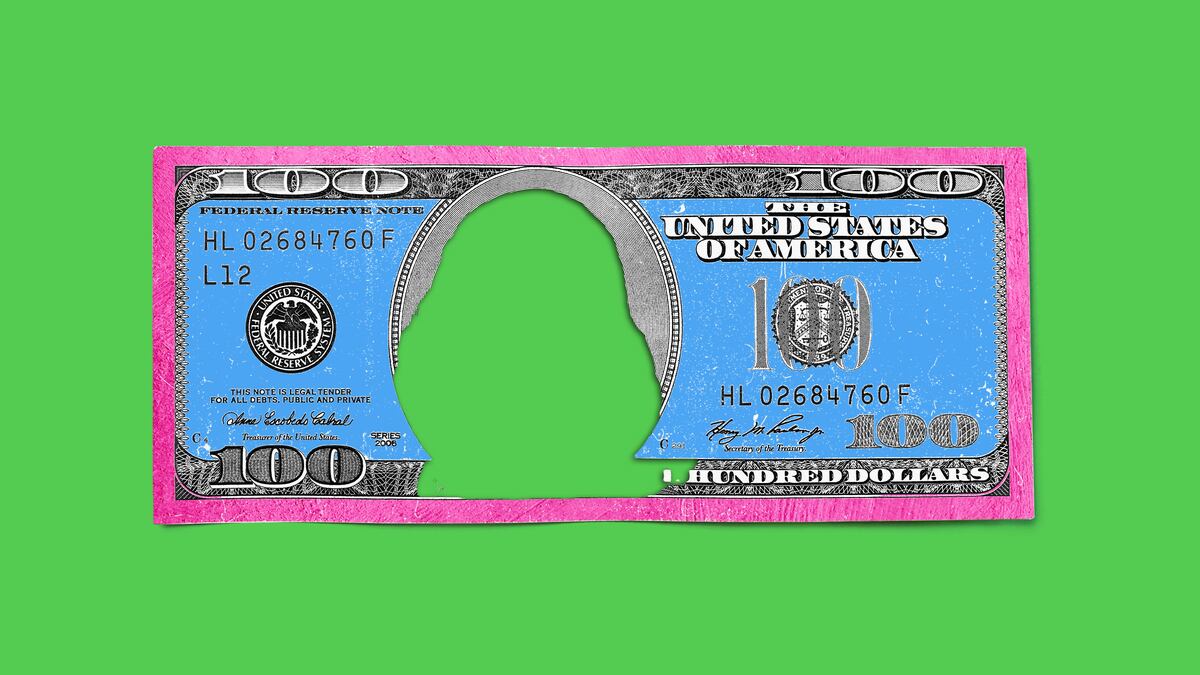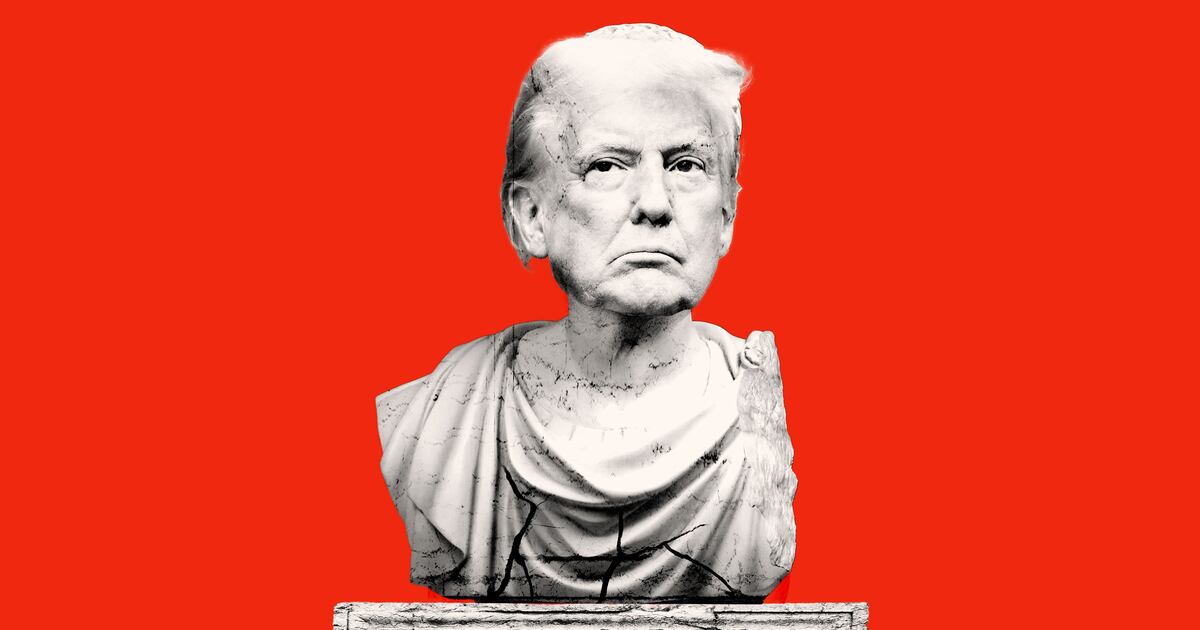On Thursday, Mnuchin Gallery and Berry Campbell Gallery in New York City will both launch shows dedicated to the work of Lynne Drexler, a painter whose trajectory follows a now-familiar narrative when it comes to women artists: though Drexler kicked off her career to much acclaim, even being compared to van Gogh, she languished in obscurity for most of her life.
It took until 2022 for her works to be reevaluated and command impressive auction results—estimated to sell for $40,000 to $60,000 at Christie’s in March, one of her paintings went for around $1.2 million. Drexler can’t enjoy her success, because she died in 1999.
“The art world loves old ladies and young bad boys,” Marilyn Minter, a deeply cool chronicler, in paintings and photographs, of the sensual mundanities of a woman’s life, told The Daily Beast on Tuesday, “and even if they love you, you’re not gonna succeed on the market over the most mediocre white male.”
“There’s never, ever been a female artist that has hit the white heat of somebody like Damien Hirst or Julian Schnabel, where they can’t do anything wrong,” Minter said.
Minter was featured in the 2006 Whitney Biennial, made a film that was displayed in Times Square and has been featured in several solo exhibitions, achieving an impressive level of prestige. Still, the same market restrictions endlessly echo and reverberate, like ripples in an infinite ocean: the most Minter’s work has ever sold for is $269,000.
“I don’t pay attention to the high end of the market because I’m not one of the players, so it’s better for me to not even look at all,” Minter said. “But I’m one of the lucky ones, because I can make a living from my work.”
Earlier in October, contemporary artist Caroline Walker set a new personal auction record at the Frieze London auctions when her painting Indoor Outdoor (2015) sold for $598,081 over an estimate of $67,519–$90,047, Artsy reported last week.

A member of staff poses with a painting titled Wall of Light Red by Sean Scully and a painting titled Indoor Outdoor by Caroline Walker during a press view for "Frieze Week Sales of Contemporary Art" at Sotheby's, London, on Oct. 7, 2022.
Daniel Leal/AFP/GettyYale University scholars recently released a study attempting to determine whether the art market is fair to women, a question that has arisen over and over again, despite the supposedly even playing field of the free market. The study assessed data on about 4,000 graduates of the Yale School of Art over approximately 100 years: work by women artists from the program, they found, sold for an average of 35 percent more than work with similar attributes by men.
But on the present day contemporary art market overall, women’s work is still both sold for far less and sold far less often than work by men.
Is art by women simply valued differently than art by men when it goes up for auction, and if so, why? The Daily Beast reached out to Christie’s, Phillips and Sotheby’s auction houses for comment; Sotheby’s declined to comment.
In terms of pricing, part of the way auction houses determine value is by looking at what prices artworks with similar characteristics have sold for in the past.
When women artists encounter biases like the one uncovered in a study by the University of Luxembourg, which found that male buyers of art were “more likely to think that women’s art is inferior,” co-author Roman Kräussl said, that derision can mean a woman’s artwork will sell for a low price, and subsequently, the next work of hers that will be evaluated for auction will also be priced low.
At 40 years old, Walker is enjoying the kind of stalwart mid-career market success that can still prove elusive for female artists, even amongst a present-day art world environment that champions and deliberately exalts female artists.
Artist Lyndsy Welgos is the founder of the New York-based nonprofit Topical Cream, which supports work made by contemporary artists who are women or gender non-conforming.
“Mid-career is a really scary word,” Welgos told The Daily Beast. “It’s like your life is too much, and the art world can’t package it and can’t swallow it if you’re a living, working artist.”
For comparison: in March of 2021, months shy of his 40th birthday, an NFT by the net artist Mike Winkelmann, a.k.a. Beeple—who’d spent the majority of his art-making career far removed from the auction world, toiling merrily but obscurely in the digital art space—sold at Christie’s for $69,346,250. Almost no one in the art world had ever heard of Beeple before.
The feverish NFT craze Beeple’s triumph kicked off notwithstanding, these are the starkly gendered divides that still split the art market, even when taking into account encouraging contradictory data.
Paying the price
While auction houses are eager to tout huge successes with women artists like 27-year-old breakout star Anna Weyant, whose painting Falling Woman (2020) far surpassed its $200,000 estimate to sell for $1.62 million at Sotheby’s in May, there is simply far more work by men even available for sale in the first place.
“In 2018, men created 92% of all lots and 95% of the total value of art sold at auction,” Magnus Resch, an art market economist and professor, told The Daily Beast.
A study of the art resale market by the data analytics tool Mei Moses Art Indices also shows that between 2012 and 2019, 2,472 repeat sales by 499 female artists were made. In comparison, in the same time period, 55,706 repeat sales by 8,477 male artists took place on the secondary market.
After generations of dismissing, ignoring, invalidating or burying the work produced by women artists, the art world is finally years into attempts to course-correct: the 2022 Venice Biennale The Milk of Dreams pays homage to Surrealist Leonora Carrington, and 90 percent of its participants are women; major auction houses are building sales centered around women, and what’s more, collectors have been found to be quantifiably interested in buying art made by women.
But the market numbers have simply not caught up to the art world’s shifting interests: in 2021, the five most expensive works of art sold at auction were all made by men, all of whom who have spent considerable time being celebrated in the spotlight: Picasso, Basquiat, Botticelli, Rothko and Alberto Giacometti.
On the list of the top 100 most expensive artists ever to sell at auction, only two are women: Georgia O’Keeffe and Joan Mitchell. The misogyny that has kept women down and excluded in the art market for generations can’t be reversed with only a couple of exhibitions, and women-exclusive shows and exhibitions do less to swing the pendulum in a corrective direction than one might assume.

Claude Monet (L and R) and American artist Joan Mitchell’s paintings (C) exposed at "Monet - Mitchell" exhibition, from Oct. 5, 2022, to Feb. 27, 2023, at the Fondation Louis Vuitton, Paris.
Joel Saget/AFP/GettyIn August, Forbes found that between 2008 and 2019, $196.6 billion was spent at art auctions: only $4 billion of that sum was spent on art by women, meaning that women represent 2% of the sales overall.
In 2019, a study of the preceding decade found that only 11% of acquisitions and 14% of exhibitions throughout 26 museums in the U.S. were for work by women artists.
What’s more, another 2019 study by scholars at Williams College found that by analyzing the online catalogues of 18 major U.S. museums, including the Metropolitan Museum of Art, MoMA, LACMA and the Art Institute of Chicago, they found that 85% of artists are white and 87% are men in these museum collections overall. The Daily Beast reached out to each of these 18 museums for comment.
The paintings included in “The Tudors: Art and Majesty in Renaissance England,” an exhibition currently on view at the Metropolitan Museum of Art, were all either made by men or by an unknown artist. “Cubism and the Trompe l’Oeil Tradition,” an exhibition that just opened at the Met, centers around the works of an all-male roster of Pablo Picasso, Georges Braque, and Juan Gris.
MoMA just closed a major exhibition on women photographers, and LACMA has an exhibition coming up next year called “Women Defining Women In Contemporary Art of the Middle East and Beyond,” but overall, the data shows that public, likely-earnest institutional displays of touting women aren’t working fast enough to move towards true gender equality.
“I find it interesting that my art gets very typecast for shows, and this has gotten really old to me,” painter Scout Zabinski, whose work draws heavily on figurative self-portraiture, told The Daily Beast. “I think solely female shows have become overdone—they become a sort of silencing. They erase all of the other intricacies of someone’s practice and just focus on the artist’s external body or gender identity.”
“As far as the actual pricing and sales, I try not to fixate on numbers,” Zabinski, who’s thus far exhibited with Seasons Gallery in LA and Restaurant Projects in NYC, added. “I want a long-lasting career and don’t want to raise my prices too fast.”
Nevertheless, does Zabinksi think her art is worth more than it’s being offered for at present? “I definitely think I’m actually having a problem with that now, I think the paintings are worth more than they’re sold for, and I think it’s really hard to put a value on something that means so much since my work is so deeply personal,” she said. “I think there’s a justification being made for young female artists to start off pricing their work low, in contrast to how much you see men’s work go for go for at auction early in their careers. If male artists are given more time and space in the art world, then obviously their prices rise higher and I think that’s where the sexism comes in.”
“I think what has bothered me even more than the actual pricing and sales of my work is the way people speak to me,” Zabinski said. “I’m a relatively young woman, But I also am extremely dedicated, hardworking and intelligent. A lot of people haven’t respected that. When I’ve spoken to people about business, they immediately talk down to me and have argued their points by acting as if I’m a child.”
For Minter, 74, the sexism she’s encountered in her career has vividly come from collectors: “The collectors of my generation can’t wrap their brains women making giant strides or being game-changers like they can with men,” she said.
“Overall, I think it’s easier for men to find a market, and I feel like women have to work harder and their work has to be better,” Lanise Howard, a Los Angeles-based visual artist told The Daily Beast.
“The last all-women show that I was in was in Switzerland, and that was a pretty good experience,” Howard said. “But sometimes I feel like [all-women shows] are very surface level, like, ‘power’ and ‘femininity’ but what else? What are we really trying to say?”
“Piece by piece, I don’t think women and men [artists] should be distinguished from one another,” Victoria Burns, a Los Angeles-based art advisor and consultant, told The Daily Beast. “It should be about the phenomenal work: this isn’t about sex, this is about talent. I never run after something because it’s made by a man or a woman. I’m looking to place things I think are really fresh.”
“Historically, it was definitely different,” Burns added. “If you look at Abstract Expressionist painters like Helen Frankenthaler and Joan Mitchell, in their day, they never got recognition. But today, it feels like that’s less the case. As long as the work is blowing people’s minds, young women are getting opportunities and selling well.”
“I founded Topical Cream because 10 years ago, to have work written about in the media about as a female-identifying artist was a nightmare,” Welgos told The Daily Beast. “You were always pigeonholed into multiple stupid categories. I seemed to me like women artists were asked if they were feminists in almost every interview, which seemed like a Litmus Test question asking if you were with us or against us. When you ask a male artist a question, so much is already assumed—they don’t have to account for their maleness. Maybe now they do, but back then, no way.”
“If the market has still been unbalanced, I think it’s aiming toward more success for women, and I still think a lot of older women artists are undervalued and are still a very good market decision,” Burns said.
In a 2022 study, the Journal of Economic Behavior & Organization asked participants to pick choose which of two artworks—one was made by a man, the other by a woman—they liked better, with and without artist information, and found that revealing the gender-specific names of each artist had no bearing on personal preferences.
However, in another experiment, when study participants were asked to guess which artwork was more expensive or made by a more famous artist, preference norms shifted “towards artworks of males, who are more famous on average,” the study found.
An artists’s work accumulates value throughout her career in a number of different ways, but without institutional support and word-of-mouth buzz that gradually adds up to stardom, achieving steadily competitive auction prices is nearly impossible.
The market gap is also is connected to the frequency with which artists were named in book citations, the Yale study found.

Marilyn Minter poses for a portrait in front of one of her paintings of lipstick in 1995 in New York City.
Catherine McGann/GettyAmong the artists Yale analyzed, before 1983, men were mentioned in books 3 to 14 times more often than women. After 1983, the study found, male artists’ citations continued to be two to three times more frequent.
Book citations, the Yale study states, connote an artist’s importance: “Women received less recognition,” William Goetzmann, a professor of finance at Yale and a co-author, said in the study. “In economic terms, they’re not getting as much free advertising.”
Even with abundant evidence that the odds are heavily against women artists in the art market, “there isn’t definitive information in one place to analyze all auctions and sale prices over time and to sort it by gender easily,” Sandra Harris, the Executive Director of American Women Artists, told The Daily Beast.
“Just as important to a group like ours as auctions and the secondary market is what women make in the primary market, or the first sale of the work by artists or galleries and whether they are acquired by museums as often as work by men,” Harris said.
As aforementioned, women artists late in their career are sometimes discovered and retroactively celebrated, but this form of success comes along rarely. As their careers begin, in order to succeed on the primary market and get a chance at longevity, women artists have an extremely narrow entry point through which they must pass.
“Very early on in an artist’s career, it’s already decided if the artist will be financially successful or not, and we’re talking here about the first 5 to 10 exhibitions,” Resch said.
“What makes an artist successful is not the art that she creates,” Resch said. It’s not the subject, and it’s not really the medium. What really matters is which network of galleries and museums the artist is in.”
As part of Quantifying reputation and success in art, a 2018 study co-authored by Resch, “we were able to prove that there’s one small network—I call it the Holy Land—that consists of a few galleries and museums, all in New York, that make an artist. If you’re not part of this Holy Land, you will never make it.”
Four galleries, to be exact: Pace, David Zwirner, Gagosian and Hauser & Wirth. It’s an incredibly daunting state of affairs for any young artist, especially when attaining representation is such a mysterious process.
“Galleries always say the same thing,” Resch said. “Obviously the art matters, but what really matters is: who is introducing me to you?” Galleries rely heavily on the artists they are already representing for referrals, Resch explained, meaning the evidence shows that a young artist must essentially become a networking force to be reckoned with in order to have any chance of survival.
In other words, institutional support comes from institutional support, and an artist can’t be lauded or supported if no one’s ever heard of her. Even with all the celebration of women’s art in the air lately, that’s a disconcerting state of affairs.






